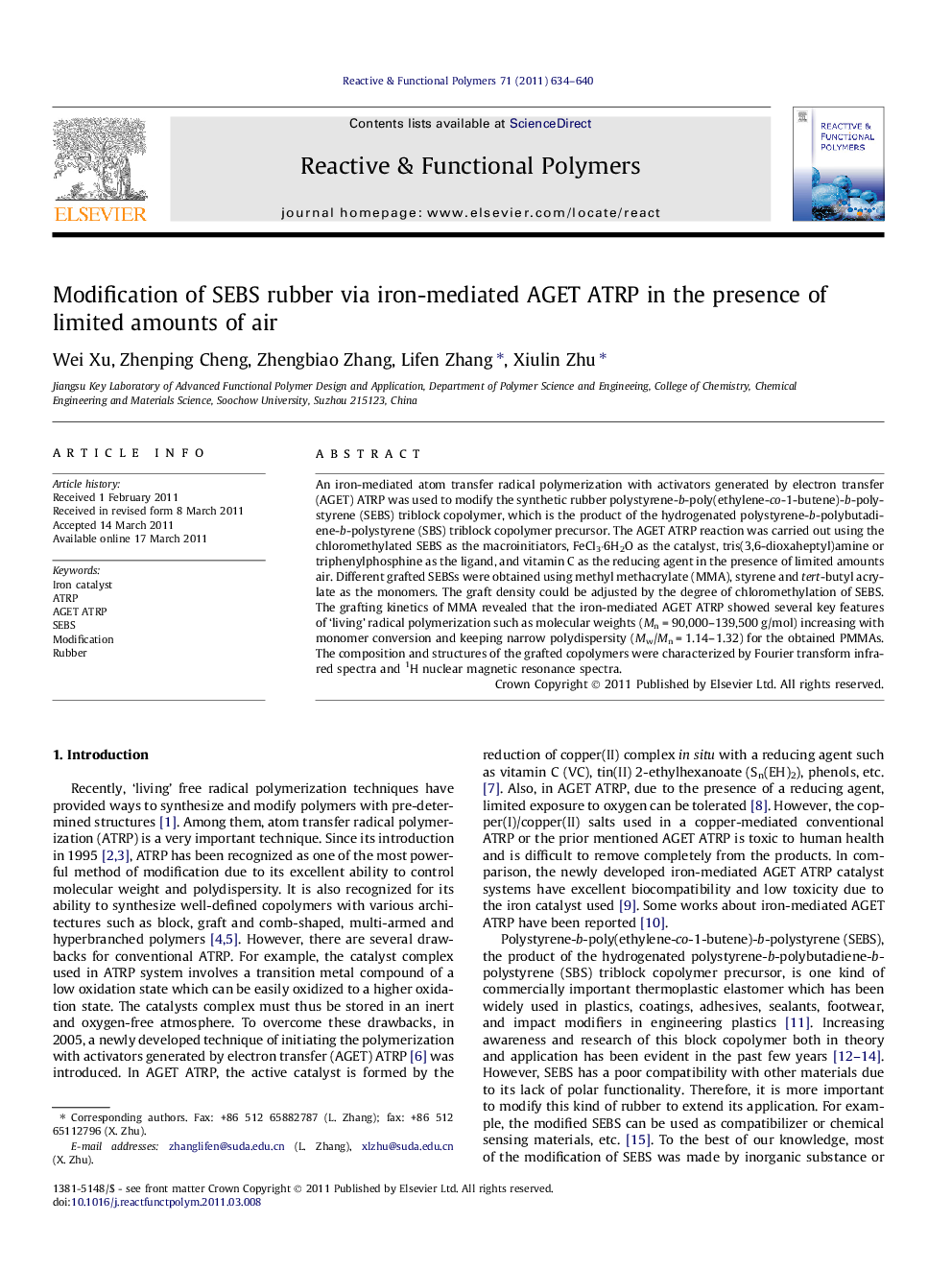| Article ID | Journal | Published Year | Pages | File Type |
|---|---|---|---|---|
| 5210320 | Reactive and Functional Polymers | 2011 | 7 Pages |
An iron-mediated atom transfer radical polymerization with activators generated by electron transfer (AGET) ATRP was used to modify the synthetic rubber polystyrene-b-poly(ethylene-co-1-butene)-b-polystyrene (SEBS) triblock copolymer, which is the product of the hydrogenated polystyrene-b-polybutadiene-b-polystyrene (SBS) triblock copolymer precursor. The AGET ATRP reaction was carried out using the chloromethylated SEBS as the macroinitiators, FeCl3·6H2O as the catalyst, tris(3,6-dioxaheptyl)amine or triphenylphosphine as the ligand, and vitamin C as the reducing agent in the presence of limited amounts air. Different grafted SEBSs were obtained using methyl methacrylate (MMA), styrene and tert-butyl acrylate as the monomers. The graft density could be adjusted by the degree of chloromethylation of SEBS. The grafting kinetics of MMA revealed that the iron-mediated AGET ATRP showed several key features of 'living' radical polymerization such as molecular weights (Mn = 90,000-139,500 g/mol) increasing with monomer conversion and keeping narrow polydispersity (Mw/Mn = 1.14-1.32) for the obtained PMMAs. The composition and structures of the grafted copolymers were characterized by Fourier transform infrared spectra and 1H nuclear magnetic resonance spectra.
